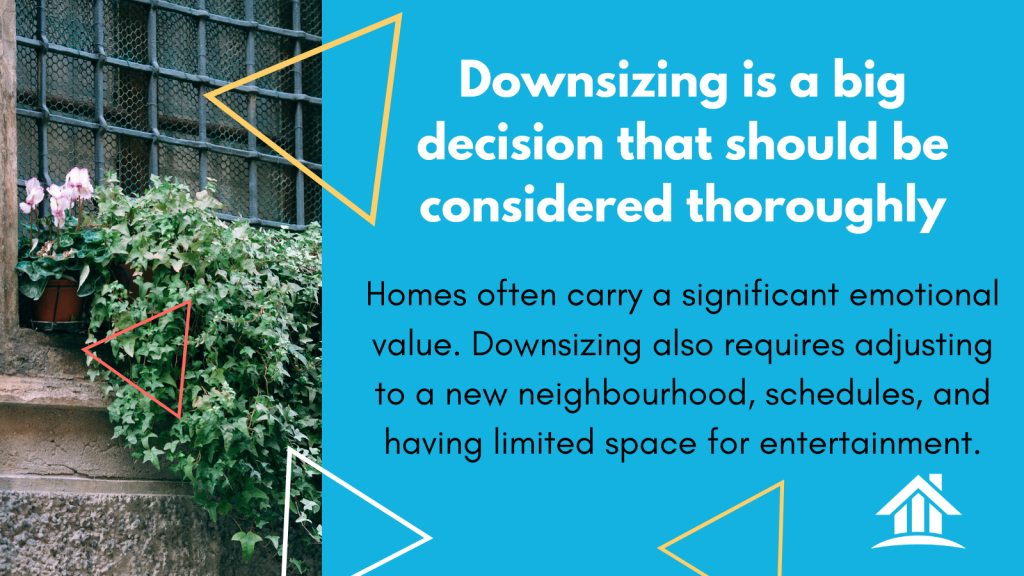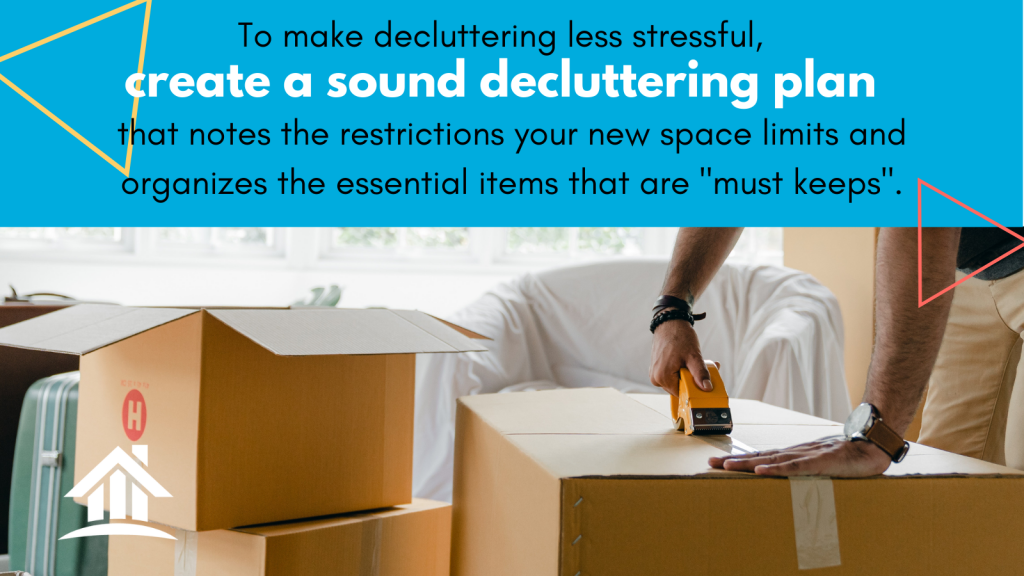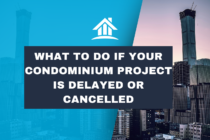In recent years, minimalism has become a big trend in North America. Minimalism is a lifestyle of living with less and only owning what truly brings value to your life. The idea of minimalism has been part of real estate for years, where homeowners decide to downsize their possessions and home. This process is typical with older individuals and couples whose children have moved out. As a result, they may no longer need the amount of square footage that their home provides.
Downsizing allows homeowners to turn some of their home equity into cash by selling their current home and moving to a more affordable home or area. This move further helps reduce monthly bills such as heat and hydro, reduce the amount of cleaning and home maintenance, and possibly allows you to move to an area that’s closer to loved ones or with more green space.
If you’re considering downsizing your home, this article provides three tips on how to do so. The article goes over:
- What to consider to determine if downsizing is right for you and what the alternatives are;
- How to create a plan to declutter your belongings and prepare for moving to a smaller space; and,
- What you should consider when purchasing your next home.
Consider if Downsizing is Truly the Right Decision
Downsizing sounds excellent in theory. But there are numerous drawbacks that downsizing advocates don’t mention. It can be great for some but not for others.
A lot of people downsize for the financial incentive. However, one survey found almost 30% of downsizers said the cost of downsizing was more than expected. Selling your current home and buying a new one is an expensive process. There are numerous costs associated with it, including realtor commissions, legal fees, and home staging costs. You may also consider making a few renovations to maximize the amount you can sell your home for. This can range from a new paint job to a kitchen remodel.
There are also emotional costs to downsizing. Many older people have lived in their current homes for decades. They’ve grown accustomed to routines, the neighbourhood, the size of their home, and much more. Moving to a new space, community, or even city can be a massive shake up that you didn’t prepare for. Suddenly, you have to form new friendships with the neighbours or find a new coffee shop for your weekly brunch. The reduced space also means you’ll need to throw out a lot of your old belongings. And you won’t have as much space to entertain friends and family.

If you need additional funds for retirement but want to keep your home, an alternative is a reverse mortgage. A reverse mortgage lets you access your home’s equity without the need to move to a new home. This removes the potential costs and emotional risks from the equation.
Create a Plan to Declutter Your Belongings
The decluttering process can be challenging. Downsizing leaves you with less space than your current home, so it’s mandatory to relieve yourself of some possessions.
You can start the downsizing process before committing by decluttering your belongings. This means throwing out, giving away, and selling items that you no longer use. Throwing a yard or garage sale is a great way to go about this and bring in a bit of cash. This process can help you account for all the items in your home and reveal whether you have any deep attachments to specific things.
Once you decide you want to downsize and start looking at homes, you’ll want to develop a decluttering plan so that you’re not overburdened with deciding what to throw out later on. To do this, start with understanding what restrictions you’ll have. For example, how much square footage will your living space be reduced by? Next, list items that you must keep. This likely includes heirlooms, family photos, and the things you use daily. Give away, sell, donate, or store the items that aren’t on your “must keep” list.
Even if some items were expensive, there’s no point in keeping them around if you don’t use them. Hopefully, that item retained its value, and you can recoup some of its costs by selling it online.

Think of What Your New Home Needs for the Long-Term
Due to COVID-19, the condo apartment market in populous cities has declined in price and demand. This may be great news for the 32% of boomers looking to buy a a condo within the next five years. Some of these boomers may move in. But a condo apartment may not be the ideal living situation for everyone’s retirement lifestyle.
When you downsize, remember that this is where you may end up living out your golden years. You want a home with features and a neighbourhood that accommodates you now and 20 years down the road. For example, a walk-in tub or shower over a bath will be better if your mobility gets weaker with age. Living in a safe community with parks and nearby hospitals is also essential. Further, high-rise condominiums may not be the best choice. If elevators are not functioning, it may mean you need to take a flight or two of stairs, which become more difficult as you age.
Speaking to a real estate agent with experience in helping home sellers downsize is a significant help. These agents have the expertise to understand what to look out for to accommodate your current and future needs. They can also provide advice on the declutter and moving process.

Downsizing is a big move for anyone. It involves a lot of consideration in whether it’s the right choice, how to declutter your belongings, and what you’ll need for the long-term. But it also has many benefits such as extra savings and reduced maintenance for your home and lifestyle.




